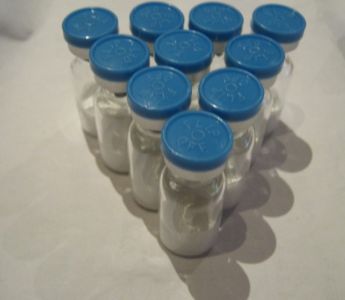Hello Loyal Reader. I constantly see new members on the boards asking if steroids, will make them fail drug tests. Well the answer would typically be no, but the question could be a bit more difficult to answer. There are certain mandates for certain circumstances. Typically a private employer can test for anything they want. Steroid testing tends to be more on the expensive side, and are not typically done for employment. Now keep in mind, if your company had reason to believe you were using illegal drugs, they could possibly have their employees tested for Anabolic, Androgenic Steroids (AAS). Here is a cool little article I found that breaks down the testing panels, and what is typically looked for in these panels.
What drugs do tests detect?
Testing conducted according to SAMHSA’s guidelines checks for five illicit drugs plus, in some cases, alcohol (ethanol, ethyl alcohol, booze). These five illicit drugs are:
- Amphetamines (meth, speed, crank, ecstasy)
- THC (cannabinoids, marijuana, hash)
- Cocaine (coke, crack)
- Opiates (heroin, opium, codeine, morphine)
- Phencyclidine (PCP, angel dust)
However, most private employers are not limited in the number of substances they can test for and may include drugs that individuals legitimately and/or therapeutically take based on a physician’s prescription. Although most private employers can test for any combination of drugs, there are commonly selected “panels.”
The typical 8-Panel Test includes the above-mentioned substances plus:
- Barbiturates (phenobarbital, butalbital, secobarbital, downers)
- Benzodiazepines (tranquilizers like Valium, Librium, Xanax)
- Methaqualone (Quaaludes)
The typical 10-Panel Test includes the 8-Panel Test plus:
- Methadone (often used to treat heroin addiction)
- Propoxyphene (Darvon compounds)
Testing can also be done for:
- Hallucinogens (LSD, mushrooms, mescaline, peyote)
- Inhalants (paint, glue, hairspray)
- Anabolic steroids (synthesized, muscle-building hormones)
- Hydrocodone (prescription medication known as Lortab, Vicodin, Oxycodone)
- MDMA (commonly known as Ecstasy)
Methods of testing:
There are a number of different bodily specimens that can be chemically tested to detect evidence of recent drug use. Although some state laws dictate which types of tests can be used, a number of options are technologically feasible. Urine is the most commonly used specimen for illicit drugs, reflecting SAMHSA’s guidelines, and breath is the most common for alcohol, reflecting DOT’s guidelines.
Urine: Results of a urine test show the presence or absence of drug metabolites in a person’s urine. Metabolites are drug residues that remain in the body for some time after the effects of a drug have worn off. It is important to note that a positive urine test does not necessarily mean a person was under the influence of drugs at the time of the test. Rather, it detects and measures use of a particular drug within the previous few days and has become the defacto evidence of current use. Because alcohol passes rapidly through the system, urine tests must be conducted very quickly after alcohol consumption in order to ensure any degree of accuracy. For this reason, urine tests are generally not helpful in detecting alcohol use as opposed to illicit and prescription drug use, which is more easily traced in urine.
Breath: A breath-alcohol test is the most common test for finding out how much alcohol is currently in the blood. The person being tested blows into a breath-alcohol device, and the results are given as a number, known as the Blood Alcohol Concentration (BAC), which shows the level of alcohol in the blood at the time the test was taken. BAC levels have been correlated with impairment, and the legal limit of 0.08 for driving has been set in all states. Under DOT regulations, a BAC of 0.02 is high enough to stop someone from performing a safety-sensitive task for a specific amount of time (usually between 8 and 24 hours) and a BAC reading of 0.04 or higher is considered to be a positive drug test and requires immediate removal from safety-sensitive functions. Under DOT regulations, a person who tests at the 0.04 BAC level may not resume job duties until a specific return-to-duty process has been successfully completed.
Other alternative specimens that can be used for detecting the use of selected drugs of abuse include blood, hair, oral fluids and sweat.
Blood: A blood test measures the actual amount of alcohol or other drugs in the blood at the time of the test. Blood samples provide an accurate measure of the physiologically active drug present in a person at the time the sample is drawn. Although blood samples are a better indicator of recent consumption than urine samples, there is a lack of published data correlating blood levels for drugs and impairment with the same degree of certainty that has been established for alcohol. In cases of serious injury or death as the result of an accident, the only way to determine legal intoxication is through a blood specimen. There is also a very short detection period, as most drugs are quickly cleared from the blood and deposited into the urine.
Hair: Analysis of hair provides a much longer “testing window,” giving a more complete drug-use history going back as far as 90 days. Like urine testing, hair testing does not provide evidence of current impairment, but rather only past use of a specific drug. Hair testing cannot be used to detect for alcohol use. Hair testing is the least invasive form of drug testing, therefore privacy issues are decreased.
Oral Fluids: Saliva, or oral fluids, collected from the mouth also can be used to detect traces of drugs and alcohol. Oral fluids are easy to collect (a swab of the inner cheek is the most common collection method), harder to adulterate or substitute, and may be better at detecting specific substances, including marijuana, cocaine and amphetamines/methamphetamines. Because drugs do not remain in oral fluids as long as they do in urine, this method shows promise in determining current use and impairment.
Sweat: Another type of drug test consists of a skin patch that measures drugs in sweat. The patch, which looks like a large adhesive bandage, is applied to the skin and worn for some length of time. A gas-permeable membrane on the patch protects the tested area from dirt and other contaminants. Although relatively easy to administer, this method has not been widely used in workplaces and is more often used to maintain compliance with probation and parole.
When drug testing is conducted?
There are a variety of circumstances under which an organization may require a
drug test. Following are the most common or widespread:
Pre-Employment: Pre-employment testing is conducted to prevent hiring individuals who illegally use drugs. It typically takes place after a conditional offer of employment has been made. Applicants agree to be tested as a condition of employment and are not hired if they fail to produce a negative test. However, it is possible for employees to prepare for a pre-employment test by stopping their drug use several days before they anticipate being tested. Therefore, some employers test probationary employees on an unannounced basis. Some states however, restrict this process. Furthermore, the Americans with Disabilities Act (ADA) of 1990 prohibits the use of
pre-employment testing for alcohol use.
Reasonable Suspicion: Reasonable suspicion testing is similar to, and sometimes referred to, as “probable-cause” or “for-cause” testing and is conducted when supervisors document observable signs and symptoms that lead them to suspect drug use or a drug-free workplace policy violation. It is extremely important to have clear, consistent definitions of what behavior justifies drug and alcohol testing and any suspicion should be corroborated by another supervisor or manager. Since this type of testing is at the discretion of management, it requires careful, comprehensive supervisor training. In addition, it is advised that employees who are suspected of drug use or a policy violation not return to work while awaiting the results of reasonable suspicion testing.
Post-Accident: Since property damage or personal injury may result from accidents, testing following an accident can help determine whether drugs and/or alcohol were a factor. It is important to establish objective criteria that will trigger a post-accident test and how and by whom they will be determined and documented. Examples of criteria used by employers include: fatalities; injuries that require anyone to be removed from the scene for medical care; damage to vehicles or property above a specified monetary amount; and citations issued by the police. Although the results of a post-accident test determine drug use, a positive test result in and of itself cannot prove that drug use caused an accident. When post-accident testing is conducted, it is a good idea for employers not to allow employees involved in any accident to return to work prior to or following the testing. Employers also need to have guidelines to specify how soon following an accident testing must occur so results are relevant. Substances remain in a person’s system for various amounts of time, and it is usually recommended that post-accident testing be done within 12 hours.
Random: Random testing is performed on an unannounced, unpredictable basis on employees whose identifying information (e.g., social security number or employee number) has been placed in a testing pool from which a scientifically arbitrary selection is made. This selection is usually computer generated to ensure that it is indeed random and that each person of the workforce population has an equal chance of being selected for testing, regardless of whether that person was recently tested or not. Because this type of testing has no advance notice, it serves as a deterrent.
Periodic: Periodic testing is usually scheduled in advance and uniformly administered. Some employers use it on an annual basis, especially if physicals are required for the job. Such tests generally are more accepted by employees than unannounced tests, but employees can prepare them by stopping their drug use several days beforehand.
Return-to-Duty: Return-to-duty testing involves a one-time, announced test when an employee who has tested positive has completed the required treatment for substance abuse and is ready to return to the workplace. Some employers also use this type of testing for any employee who has been absent for an extended period of time.
Other: Other types of tests are also used by some employers. For example, follow-up testing or post-rehabilitation testing is conducted periodically after an employee returns to the workplace upon completing rehabilitation for a drug or alcohol problem. It is administered on an unannounced, unpredictable basis for a period of time specified in the drug-free workplace policy. Another type of testing, blanket testing, is similar to random testing in that it is unannounced and not based on individual suspicion; however, everyone at a worksite is tested rather than a randomly selected percentage. Other types of testing include voluntary, probationary, pre-promotion and return-after-illness testing.
Department of Transportation
Anyone designated in DOT regulations as a safety-sensitive employee is subject to DOT drug and alcohol testing.
DOT Modes
- FAA (Federal Aviation Administration)
- FMCSA (Federal Motor Carrier)
- FRA (Federal Railroad Administration)
- FTA (Federal Transit Administration)
- PHMSA (Pipeline & Hazardous Materials Safety Administration)
- USCG (United States Coast Guard
DOT Mandated Testing
- Pre-employment
- Random
- Reasonable Suspicion / Reasonable Cause
- Post – Accident
- Return-to-Duty
- Follow-up
By: MyBackgroundCheck.com

















